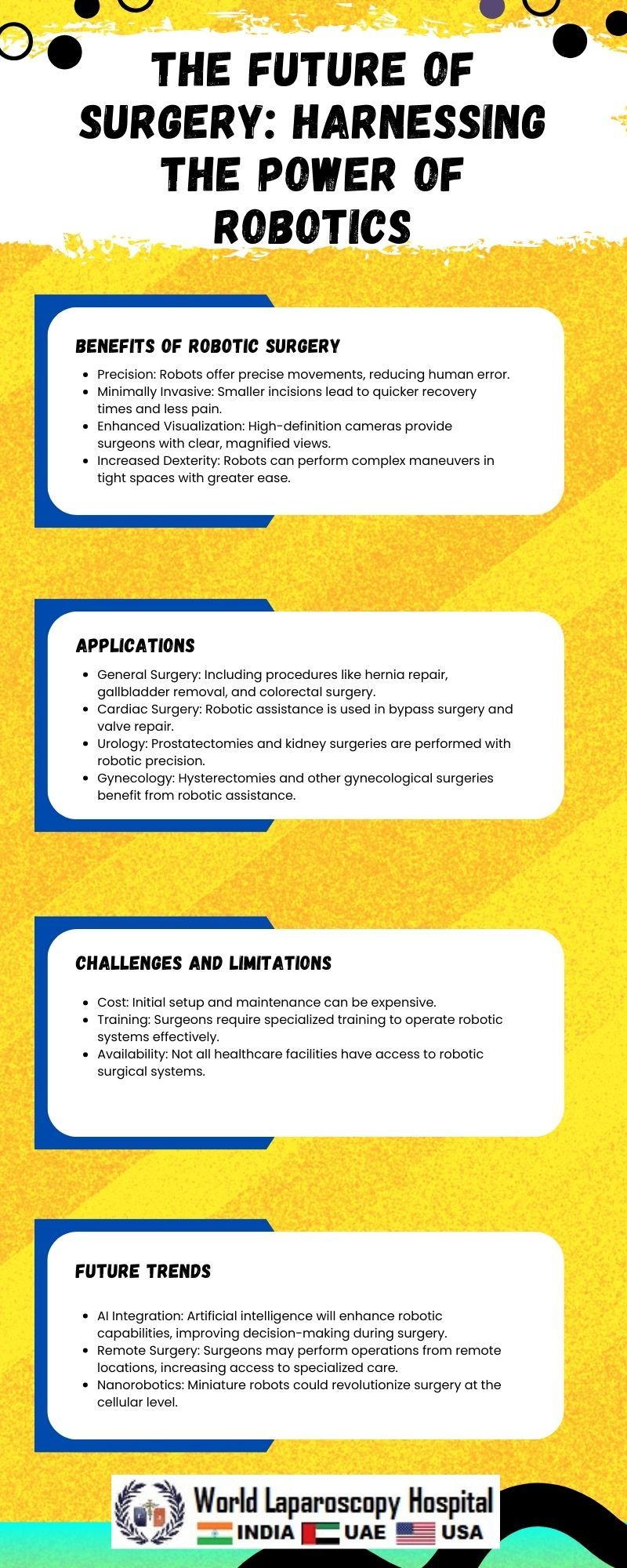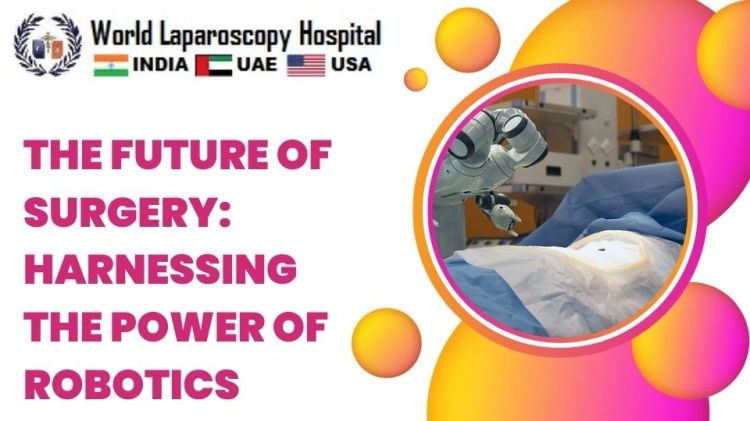The Future of Surgery: Harnessing the Power of Robotics
Introduction:
Surgery has always been a cornerstone of medical advancement, continually evolving to improve patient outcomes and quality of life. In recent years, the integration of robotics into surgical procedures has heralded a new era in healthcare, offering unparalleled precision, efficiency, and safety. This article explores the transformative potential of robotic surgery, delving into its current capabilities, future prospects, and the ethical considerations shaping its adoption.

The Evolution of Surgical Robotics:
The roots of surgical robotics can be traced back to the 1980s, with the development of the PUMA 560, a robotic arm used for neurosurgical procedures. Since then, rapid technological advancements have propelled the field forward, with innovations such as the da Vinci Surgical System revolutionizing minimally invasive surgery. This robotic platform, introduced in the early 2000s, enables surgeons to perform complex procedures with enhanced visualization and precision, utilizing tiny incisions and robotic instruments controlled via a console.
Current Applications and Advantages:
Robotic surgery has gained widespread acceptance across various medical specialties, including urology, gynecology, and general surgery. Procedures such as prostatectomies, hysterectomies, and cholecystectomies are routinely performed using robotic assistance, offering patients shorter hospital stays, reduced pain, and faster recovery times. The key advantages of robotic surgery lie in its ability to provide superior maneuverability, magnified visualization, and tremor elimination, enabling surgeons to operate with unprecedented accuracy and control.
Technological Innovations Driving Progress:
The future of robotic surgery is poised for further innovation, driven by advancements in artificial intelligence, machine learning, and surgical robotics. Intelligent surgical systems equipped with AI algorithms can analyze real-time data, predict surgical outcomes, and assist surgeons in decision-making processes. Additionally, developments in haptic feedback technology aim to replicate the sense of touch, enabling surgeons to perceive tissue characteristics and improve surgical precision. Other notable innovations include miniaturized robotic platforms for intraluminal and microsurgery applications, expanding the scope of robotic-assisted procedures.
Challenges and Ethical Considerations:
Despite its promising potential, robotic surgery is not without challenges and ethical considerations. Cost barriers associated with equipment acquisition and maintenance can limit access to robotic technology, exacerbating healthcare disparities. Furthermore, concerns regarding surgeon training and proficiency in robotic techniques raise questions about patient safety and outcomes. Ethical dilemmas surrounding informed consent, autonomy, and liability also require careful consideration in the context of robotic surgery. Addressing these challenges necessitates collaboration among healthcare stakeholders, policymakers, and technology developers to ensure equitable access, safety, and ethical practice standards.
The Role of Robotics in Global Healthcare:
The impact of robotic surgery extends beyond individual patients to global healthcare systems, offering opportunities to address healthcare disparities and improve surgical outcomes worldwide. In low-resource settings, where access to specialized surgical care is limited, robotic platforms can enable remote mentoring and telesurgery, allowing experienced surgeons to guide and support local healthcare providers in performing complex procedures. Moreover, initiatives focused on capacity building, training, and technology transfer can empower healthcare professionals in underserved regions to harness the potential of robotic surgery for the benefit of their communities.
Regulatory Framework and Future Directions:
As robotic surgery continues to evolve, regulatory frameworks must adapt to ensure patient safety, quality assurance, and ethical standards. Regulatory agencies play a crucial role in evaluating the safety and efficacy of robotic platforms, establishing guidelines for training and credentialing, and monitoring adverse events and outcomes. Additionally, ongoing research and clinical trials are essential to validate the effectiveness of robotic-assisted procedures, optimize surgical techniques, and expand the indications for robotic surgery across different specialties.
Conclusion:
The future of surgery is undeniably intertwined with the advancement of robotic technology, offering unprecedented opportunities to enhance patient care, improve surgical outcomes, and shape the future of healthcare. As we navigate the complexities of integrating robotics into surgical practice, it is imperative to prioritize patient safety, ethical considerations, and equitable access to ensure that the transformative potential of robotic surgery is realized for the benefit of all. Through collaboration, innovation, and responsible stewardship, we can harness the power of robotics to revolutionize healthcare and pave the way for a healthier and more equitable future.



